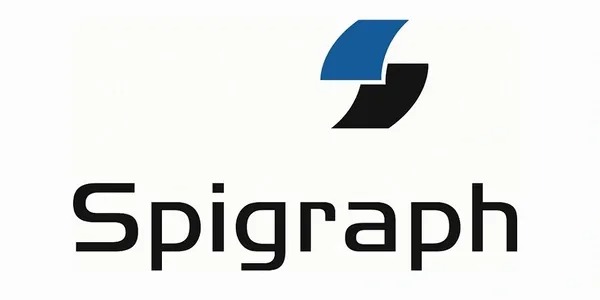Spigraph and Telic Digital Interview
John Stinchcombe interviewed Nick Scarff of Telic Digital Ltd, a new Spigraph partner
John S: Nick, you and I have known each other quite a while, but for the benefit of our readers, can you provide some background on what you’ve done professionally for the past five years or so, please?
Nick S: As you know John, I have been in the Business Process Automation industry for quite a while now, the best part of 20 years. In the main, I have spent my time helping organisations with Digital Transformation programmes; these have tended to take the form of either tactical, “point” solutions to solve very immediate business challenges or more strategic initiatives which make use of a common automation platform for multiple business processes. Typically, these projects start with spending some time- understanding customer’s business processes, understanding how they operate and aligning suitable technology to provide quantifiable business benefits that the organisation can realise ultimately.
John S: Thanks Nick, that’s very useful and good to have an update. I believe you’re very well placed to capitalise and exploit opportunities in the market for Business Process Improvement and Digital Transformation. What was your motivation to start Telic Digital in 2020?
Nick S: Having worked closely with some of the largest companies in the UK as customers for Digital Transformation projects and being closely aligned with the Systems Integrator eco-system, I concluded about a year ago that opportunities for Digital Transformation and automation projects would accelerate. This is due to a “perfect storm” of the core technology becoming more accessible through cloud services, the availability of more options in an increasingly competitive market and SMB customers wanting to enjoy the benefits of automation that were hitherto only available to Enterprise customers.
Little did I know that this perfect storm would escalate into a “commercial maelstrom” of unprecedented proportions in the form of the Covid-19 pandemic that would catapult the Digital Transformation market to levels that were unimaginable even two years ago. For many organisations, it’s a case of Digitally Transforming key processes or cease trading, it really is as simple as that.
Take AP Invoice Processing as an example. During and after the Covid-19 shutdown, I wonder how many paper invoices were physically delivered to offices that employees have absolutely no intention of visiting for weeks? Crucially, suppliers would have scrabbled around to re-issue these as attachments to email, and now, due to Covid-19, they have shifted to email. Now their invoices are in a digital form, it’s a really simple step to automate the transformation of semi-structured information into a stream of verified invoice data that is uploaded to their Finance system; this is a process that typically requires little or, in some cases, zero user intervention. In addition to the obvious benefit of freeing up valuable resources, the finance team now has excellent visibility of their inbound invoices and payment commitments.
We have also seen many organisations attempt Digital Transformation and have ended up stalling or failing for a variety of different reasons; for instance, being over-ambitious, bringing in wholesale changes that are driven by technology only without being cognisant of processes or organisational culture, or working with the wrong partner. Our key focus is helping organisations to embark and successfully go through their Digital Transformation journey while keeping risk and operational disruption to a minimum.
John S: What style of business will Telic Digital be, and what solution areas do you plan to focus on initially?
Nick S: Telic Digital is a highly experienced hybrid Consulting / VAR business that seeks to assist organisations to deliver significant value by simplifying the Digital Transformation and automation of their business processes. The goal is to partner with organisations to deliver strategies for agile, remote working and paperless/paperlite business processes whilst reducing costs and ensuring adherence to compliance and regulatory requirements.
It’s an uncomplicated and concise strategy that we’re more than capable of delivering.
John S: that sounds like a solid proposition; the Digital Transformation market is growing and there’s certainly further incentive for all organisations to do this due to the change of working practices. Without stating the obvious, the shift for the medium term to a WFH model must surely focus thoughts and accelerate the Digital Transformation proposition?
Nick S: Yes, I’d say more than focus thoughts; the past 4-5 months have seen this subject thrust to the forefront of core operational discussions and planning. Those organisations that failed to make progress with digitally transforming their core processes have certainly experienced some challenges since the start of the pandemic. Widespread WFH adoption will undoubtedly continue to provide us with plenty of work in the Digital Transformation sector. In the months preceding the pandemic, I continued to be amazed at the number of customers who receive electronic documents and print them out, only to then scan them to enable workflow and sharing around the organisation. It’s a classic Heath Robinson approach, and the scary part was that it wasn’t just a one-off anecdote or isolated case.
John S: Given these scenarios and your experience in Digital Transformation, where do you see the market over the next couple of years?
Nick S: I don’t have a crystal ball, but the deep impact of the Covid-19 crisis will affect the economy significantly. However, I’m very optimistic about the future, hence the decision to found the Telic Digital business now. There are several aspects where Digital Transformation and Process Improvement tie into the Covid-19 situation: the majority of organisations have needed to accommodate the practicalities of managing a remote workforce, lock-downs, social distancing and new working practices. As I mentioned above, some organisations were already in a strong position because they’d already digitalised their core business processes. It’s fair to state that this isn’t entirely down to forward thinking and planning as the appetite for Digital Transformation can be driven by the needs of specific industries; for example, by necessity, organisations in Supply Chain and Logistics have long transformed their operations to digital; working with paper is the exception for those businesses, and it’s only matter of time before other industries such as Financial Services and Manufacturing follow suit. It’s immensely difficult for organisations to be fully in control and in a position to fully leverage and protect their transactional, customer and contractual information that’s held in paper form.
John S: I think you’re spot on, and I believe that Document Transformation adoption rates still have a long way to go; this is one of the significant hurdles that businesses need to cross before hoping to achieve effective and wider automation. As leading vendors in Digital Transformation, such as Kofax, have shown, a high proportion of RPA projects are reliant on automated tagging and indexing of inbound documents and messages that are presented in an unstructured and somewhat unpredictable form. Fully integrated, end-to-end automation solutions, ideally from a single vendor, are crucial to attaining the levels of automation that many organisations envision and now demand.
Given your expertise and experience delivering Content Management solutions across multiple sectors, I’d like your opinion on the opportunity for wider Information Management solutions such as Everteam Discover?
Nick S: that’s a good question. Rightly, there’s currently a lot of focus on Process Discovery, and so the term, “Discovery” is quite a hot topic in Process Improvement, Workflow and RPA sectors. However, I strongly believe that we mustn’t lose focus on the basics of Information Governance, data security and privacy. Not only are the fines substantial, but the whole notion of using an automated solution to ensure the integrity and compliance of your unstructured data is very sensible.
Also, it’s vital, from a productivity and quality perspective, that the time and effort of individuals in searching for accurate information can justify the deployment of these systems. Naturally, the importance of this subject is amplified by the “new normal” of Knowledge Workers operating remotely. One of the problems faced by organisations is that for the majority of information breaches or instances of loss of information are very rarely reported or disclosed. Any solution that addresses these challenges should be very well received.
John S: thanks Nick, this feedback is very useful. Where do you think End Customers should focus their efforts from a Digital Transformation and Process Automation stand-point? How can the typical organisation get started on projects?
Nick S: In my experience, it’s important to make a list of candidate processes that prospective organisations consider to be either sub-optimal from an efficiency perspective and /or human intervention (labour overhead) perspective. Put another way, invest the time to rate each target process on a 1-10 scale based on the potential tasks within it that could reasonably be automated. It’s important to seek specialist help to assess the viability of / suitability for automation, and that’s an area that our organisation, Telic Digital, can help. The second point is for the End Customer to appoint an internal champion who will be responsible for owning the project, evaluating candidate processes, assessing the business outcome and ensuring close working with the chosen solution provider. This individual would eventually be closely involved with managing the roll-out of the solution, provided, of course, that a good fit was identified. The third point is to keep an open mind about the types of solutions until a full appraisal of the requirement is completed; you may wish to consider process monitoring and process discovery tools to allow for an objective assessment.
Lastly, keep it real and don’t be over-ambitious; one of the prime objectives with initial RPA projects should be for the organisation to learn from and develop in-house skills in the area of process automation itself. In my experience, there’s little need to re-design and automate an entire process if a significant improvement can be achieved by automating a relatively small number of tasks that are labour intensive and / or difficult to execute. if not managed properly, the excitement and enthusiasm around technologies such as RPA can quickly turn into disappointment and low team morale. For these reasons, it’s important to prove these systems worth and steadily gain the confidence of users as they embark on automating their operations.
John S: Many thanks for the insight and wise words, Nick. It remains for me to thank you for your time today and naturally wish you all the very best for Telic Digital, I believe there are exciting times ahead for you and the team.
John Stinchcombe
Senior Business Development Director P: +442034511594
E: john.stinchcombe@spigraph.com www.spigraph.com
Nick Scarff
Director P: +447879427349
E: nick.scarff@telic.digital www.telic.digital






